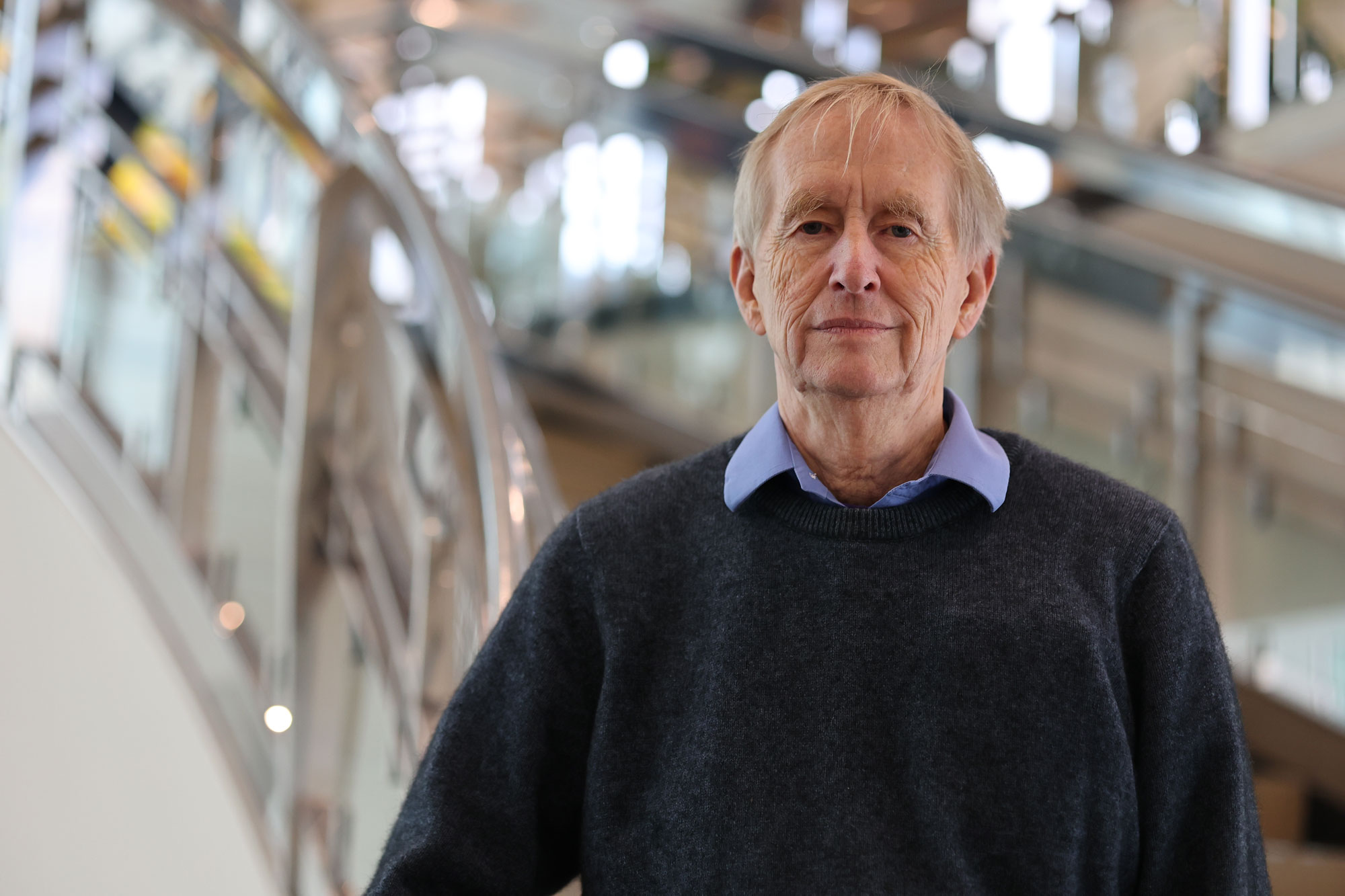
Community servant Community servant Community servant
Dr. John Hess sees service as a way of life
By Caitlin Klask | Photos by Anil Kapahi | December 2023
When you picture a modern innovative genius, do you think of a guy in a turtleneck, showing off a fancy new computer or driving an expensive car? Instead, imagine an septuagenarian hopping off a bus to chat about the time he revolutionized blood transfusion. Dr. John Hess, a physician at Harborview and the recipient of the 2023 Distinguished Alumni Veteran Award (DAVA), transformed the way the medical world treats trauma patients. But for him, work is often just a way of keeping busy, something to occupy his mind.
“It gave me something to do,” Hess, ’72, says, in reference to the time he saved lives, money and countless hours by providing detailed reports to hospitals in the U.S. on Korean children with heart problems, including photographic slides of the kids and their families, X-rays and EKGs, to determine whether they’d be likely to benefit from stateside health care. “It kept me out of trouble.”
Hess grew up in Spokane, where he read books like “The Rise and Fall of the Third Reich” to pass time. After graduating from Washington State University with an Army ROTC commission, he studied and loved metabolic chemistry under Nobel Prize winner Edmond Fischer at the UW School of Medicine. “It was a class of 82 people – 76 of whom were men. And mostly white,” he recalls. Itching for a new perspective after his third year, Hess jumped at the opportunity to work in American Samoa for the UW’s Haring Center, which studies barriers and provides solutions for children with disabilities (now called the Center for Human Development and Disability), scanning children for physical disabilities. By the time he earned his M.D. and was called into the Army in 1973, he was ready to see the world.

John Hess, a UW professor of laboratory medicine, developed transfusion systems for UW Medicine and his research involves the development of better blood storage systems and hemorrhage control devices. His innovations have saved thousands of lives in military and trauma settings.
Hess spent a year in South Korea, a year in Thailand and two years in Honolulu (finishing his residency at the big Army hospital before returning to South Korea). While most of his time in Korea was “treating clap in soldiers,” he says, he preferred his Saturdays just outside the Army base, working in a small clinic with six Irish nuns. “It started out being mostly poor displaced farmers and their families with tuberculosis and college students with goiters, but then I started seeing little kids with congenital heart disease and it kind of mushroomed,” says Hess, referring to the children he was able to help send back to the U.S. for better care. “Suddenly, there were two million people for whom I was the ultimate referral; I had access to the American lab.”
In that same volunteer-run clinic, Hess met a young Korean doctor. “Clearly two standard deviations too bright to be doing what he was doing,” he explains. The doctor’s wife, Reiko, was unable to live in Korea due to her Japanese citizenship, and the doctor, as a Korean, couldn’t visit Japan for more than one month a year. As their lives became increasingly difficult, Hess came up with a plan: He’d provide scholarship funding if the University of Hawaii would accept the doctor. “So they lived with us [in Hawaii] while he got his Master’s in Public Health.”
That doctor was Lee Jong-wook, who ultimately became the director general of the World Health Organization. “He’s the guy who basically browbeat George W. Bush into treating AIDS in Africa,” Hess said. Lee referred to Hess as his brother, to the confusion of some of their colleagues, which delighted Hess.
Hess’ greatest innovation came after his military career ended in 2001, though it proved immediately useful to Army trauma surgeons. The standard management of treating blood loss in trauma centers was to provide saline and red blood cells until surgeons controlled the bleeding, then provide plasma. Hess thought, what if we ditch the saline and give the red cells at a one-to-one ratio with the plasma? An Army buddy, John Holcomb, tried it in Baghdad and gave a ringing endorsement: “John, it’s magic.” In trauma centers, this new method saves 5,000 to 8,000 lives a year in the U.S.
Hess’ ethos is simple: If there’s something that needs to be done, do it. Whether it’s running a hospital on the Standing Rock Sioux Reservation in North Dakota (“I’m an internal medicine doc, and I delivered 15 babies that year!”), performing vasectomies in Thailand, or getting in line with fellow veteran doctors for an internal blood bank at Harborview (“When the old Puget Sound Blood Center said no, we just said, ‘Fine, we’ll build it!’), Hess has a can-do attitude.
“Service – not just the service – is a way of life.”